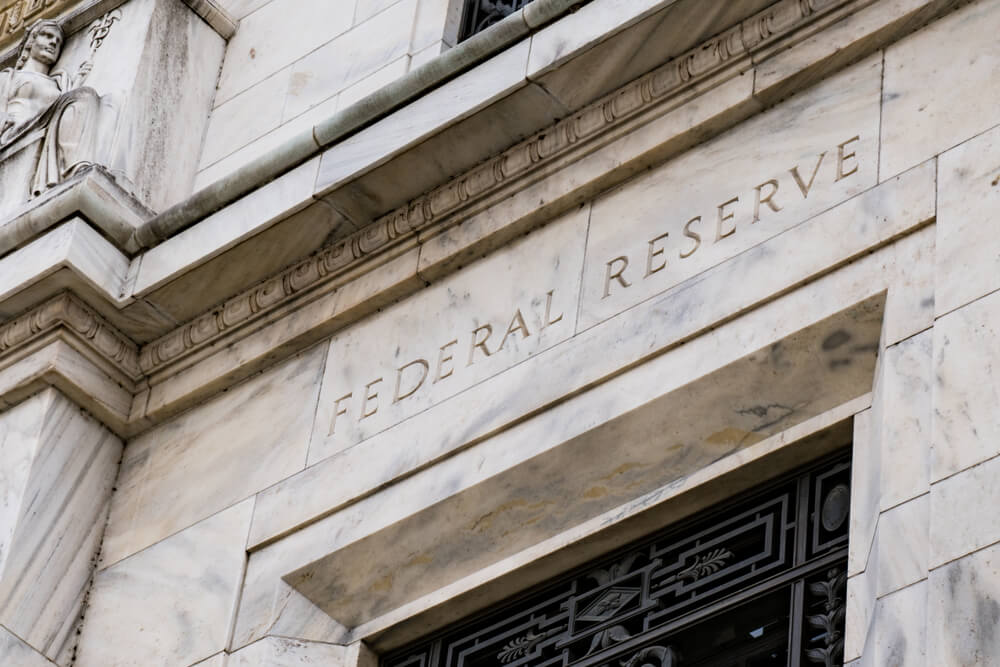The Federal Reserve on Friday repeated its pledge to “act as appropriate” to sustain the current economic expansion, now the longest in U.S. history, while noting that most Fed officials have lowered their expectations for the future course of interest rates.
The Fed’s statement on interest rates came in its semi-annual monetary policy report, which said that since May “the tenor of incoming information on economic activity, on balance, has become somewhat more downbeat and uncertainties about the economic outlook have increased.”
Stocks sold off Friday following the news, with the Dow Jones Industrial Average down roughly 120 points around 12:30 p.m. on the East Coast, reflecting a view that the Fed might engage in fewer rate hikes. The yield on the 10-year U.S. Treasury note climbed to 2.04% from just under 2%.
Federal Reserve Chairman Jerome Powell will testify before Congress on the monetary report on Wednesday and Thursday of next week. He will likely face questions on whether the strong jobs report Friday, showing 224,000 jobs created in June, lessens the chances for a July rate cut.
The Fed at its last meeting in June had signaled that it was prepared to start cutting interest rates if needed to protect the U.S. economy, a change from the pledge it had been making since January to remain “patient” before changing rates.
The Fed pushed its key policy rate up four times in 2018, angering President Donald Trump, who blamed the rate hikes for slowing economic growth and depressing the stock market. The Fed’s benchmark rate currently stands in a range of 2.25% to 2.5%.
Financial markets have been expecting a rate cut with the CME Group’s Fed tracker putting the odds of at least one rate cut at the July meeting at 100%.
However, that expectation reflected investor views before the government reported the sizable 224,000 gain in jobs in June, which was a rebound from a gain of 72,000 jobs in May.
In the monetary report, the Fed noted that views of Fed officials about the economic outlook had changed beginning in May as global growth slowed and U.S. businesses and farmers began to express “heightened concerns” about rising trade tensions.
In early May, Trump increased penalty tariffs on $250 billion in Chinese goods and threatened to broaden the tariffs to $300 billion in other Chinese imports after trade talks between the world’s two biggest economies stalled.
The Fed said that in its updated economic forecast released in June, about half of the Fed officials expected they would need to cut interest rates this year. The other half believed the benchmark rate could stay where it is currently.
Trump last week declared a ceasefire in his trade war with China after a meeting with Chinese President Xi Jinping at the Group of 20 summit in Japan. Both countries agreed to resume negotiations to reach a deal to satisfy American demands for better protection of American technology.
Trump has leveled a number of attacks at Powell and the Fed. Earlier this week, he announced his intention to fill two remaining vacancies on the seven-member Fed board with economists Judy Shelton, who had served as a Trump economic advisor, and Christopher Waller, currently the research director at the Fed’s St. Louis regional bank.
If confirmed by the Senate, both officials are expected to support Trump’s call for the Fed to cut interest rates.
US Adds Solid 224,000 Jobs in June
U.S. employers sharply stepped up their hiring in June, adding a robust 224,000 jobs, an indication of the economy’s durability after more than a decade of expansion.
The strength of the jobs report the government issued Friday could complicate a decision for the Federal Reserve late this month on whether to cut interest rates to help support the economy. Most investors have anticipated a rate cut in July and perhaps one or two additional Fed cuts later in the year. That scenario may be less likely now.
June’s solid job growth followed a tepid gain of 72,000 jobs in May, a result that had fueled concerns about the economy. But with June’s pace of hiring, employers have now added, on average, a solid 171,000 jobs for the past three months. Last month’s burst of hiring suggests that many employers have shrugged off concerns about weaker global growth, President Donald Trump’s trade wars and the waning benefits from U.S. tax cuts.
“Although there are drags on the economy in 2019, the expansion should continue through this year,” said Gus Faucher, chief economist at PNC Financial Services. “The doom and gloom was overblown.”
The unemployment rate ticked up to 3.7% in June from 3.6% for the previous two months, reflecting an influx of people seeking jobs who were initially counted as unemployed. Average hourly wages rose 3.1% from a year ago.
The job gains in June were broad. Construction companies added 21,000 workers after having increased their payrolls by only 5,000 in May. Manufacturers hired 17,000, up from just 3,000 in May. Health care and social assistance added 50,500 jobs. Hiring by transportation and warehousing companies increased 23,900.
The government sector was a major source of hiring, adding 33,000 jobs in June. Nearly all those gains were at the local level.
© The Associated Press. All rights reserved.




